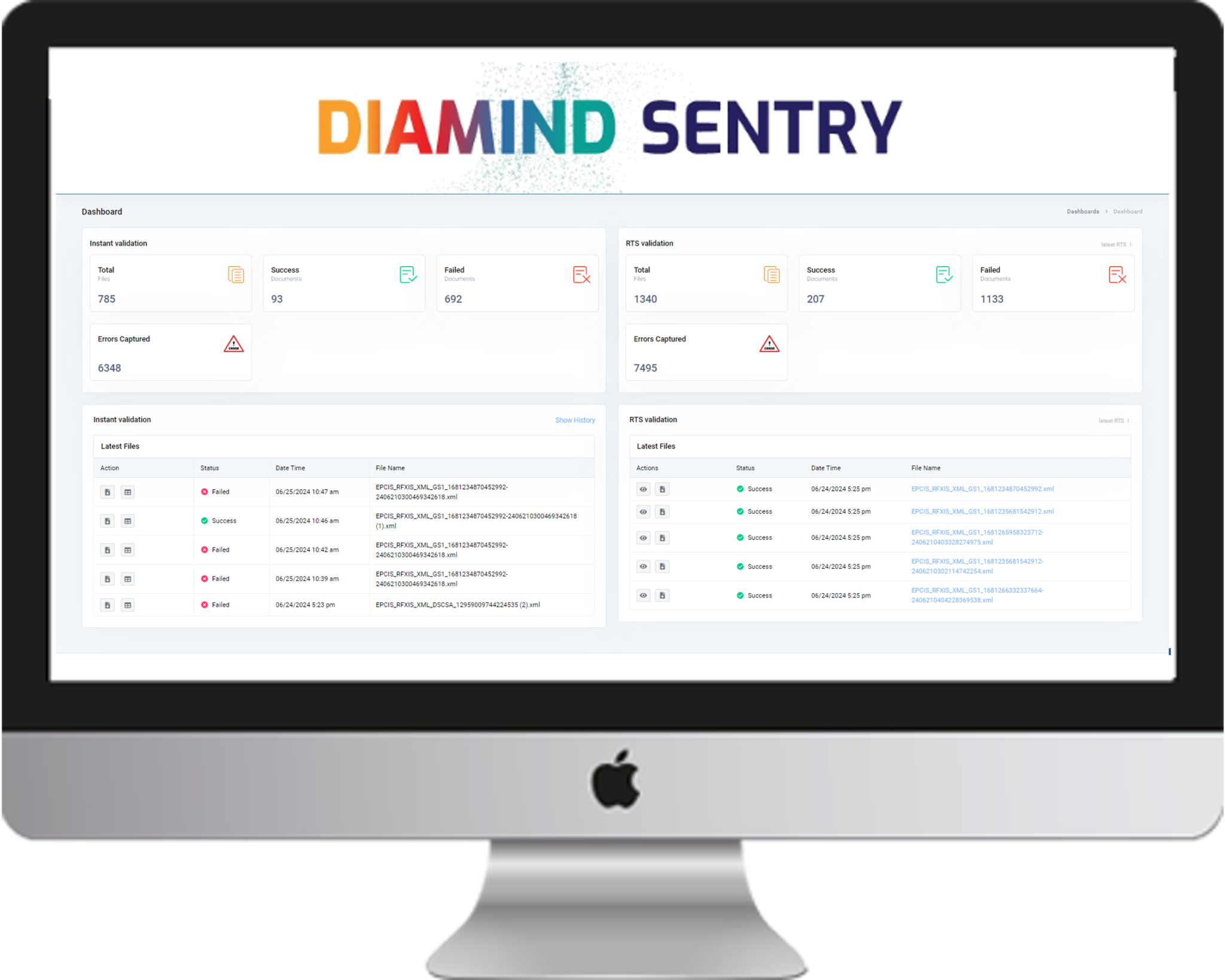The Drug Quality and Security Act (DQSA) and the Drug Supply Chain Security Act (DSCSA) forever changed pharmaceutical warehouse management. Today, logistics professionals in the pharmaceutical industry face a host of new challenges, including stringent regulatory frameworks, shifting consumer expectations, and increasing pressure from downstream trading partners and healthcare providers.
The question is, how can you adapt your pharmaceutical warehouse inventory strategy to align with these new challenges and thrive in the global prescription drug ecosystem? This blog explores the hurdles you’ll face and provides practical solutions for overcoming them by using refined strategies, employing enhanced technologies, and taking a proactive approach to innovation.
Introduction to Pharmaceutical Warehouse Management
Overseeing the daily running of a facility that stores prescription medications might as well be called “chaos management.” After all, keeping up with pharmaceutical compliance rules, meeting the ever-changing needs of your trading partners, and maintaining a real-time account of inventory is nothing if not chaotic.
As a member of this vital supply chain, you have to navigate all of the typical order processing and inventory tracking challenges of other storage facilities while simultaneously mitigating the liabilities associated with handling prescription drugs and biologics.
The good news is that there are solutions that can make your life simpler and help you stay ahead of Food and Drug Administration (FDA) regulations. The key is to identify what you are up against and mobilize your entire team toward tackling those challenges.
Key Challenges in Pharmaceutical Warehouse Management
Three of the major difficulties you’ll face on your journey toward better efficiency and improved resilience are as follows:
Storage Constraints
If you want to maintain product integrity, you’ve got to invest in high-quality, climate-controlled pharmaceutical warehousing. Optimizing your inventory control processes and engaging in safe material handling is critical to preventing product waste and ensuring patient safety.
However, due to the high costs of storing medications, it’s important to stay lean and avoid carrying too much inventory. This is where things become challenging, as carrying too little stock leads to stockouts and supply shortfalls. If you overorder, you’ll encounter spoilage issues, waste, and excess expenses.
Regulatory Compliance
The DSCSA imposed stringent regulatory requirements on members of the pharmaceutical supply chain, including warehouses and distributors. In response, you must adapt your workflows to ensure ongoing compliance. Otherwise, you’ll face severe penalties and may even be restricted from participating in the U.S. pharmaceutical supply ecosystem.
As part of this process, you must implement security measures geared toward promoting transparency and guarding against fraud. Furthermore, you have to meet all labeling and packaging requirements as laid out in the DSCSA. These labels should include expiry dates, the names of the pharmaceutical companies that made the drugs, and other key information.
Inventory Accuracy
Maintaining real-time visibility of your stock plays a pivotal role in order fulfillment and the meeting of regulatory standards. At any given moment, you should know which medications you have in stock, where they are stored, and the quantity of each item. Due to the fast-paced nature of this industry, it’s nearly impossible to achieve this level of visibility using manual processes.
You can remedy your inventory woes with a pharmaceutical warehouse management system. The best solutions offer up-to-the-minute insights into stock levels, allowing you to avoid shortages while meeting your clients’ needs.
Regulatory Compliance and Good Distribution Practices (GDP)
Good distribution practices (GDP) are established minimum standards that your organization should follow to ensure medication integrity and quality. Make sure to familiarize yourself with both domestic and international GDPs, including those published by the FDA and the European Medicines Agency.
Additionally, you need to adopt the rules laid out in federal acts like the DSCSA. These regulations apply to key members of the prescription drug sector, including manufacturers, distributors, and suppliers. You cannot treat these regulations as an afterthought. Instead, you must integrate them into the company culture and your standard operational procedures.
It’s also important to train your staff on the legal requirements that apply to your company. Equip them with the tools and resources they need to meet these regulations, such as barcode scanners, user-friendly software, and efficient workflows.
Inventory Management Systems and Technologies
Adopting automated tech tools can drastically reduce the likelihood of costly human errors in your supply chain. Start by assessing the quality of your current software. Is it cloud-based and nimble, or are you due for an upgrade?
Don’t stop there, though. Shift your attention to frontline tools like RFID or barcode scanners and automated picking systems. Streamlining these key parts of your workflows will make the organization more flexible and resilient to shifting regulatory frameworks.
Temperature-Controlled Storage and Cold Chain Management
Not all drugs can be tossed on a shelf. Temperature-sensitive pharmaceuticals are often particularly challenging to manage and store. You must keep these goods within established temperature thresholds during every link in the delivery process, including storage and transportation.
As part of these efforts, ensure you partner with reputable carriers that understand the stringent temperature constraints associated with transporting such medications. Even a temporary change in storage conditions can cause raw materials in certain substances to spoil.
Also, implement strict quality control protocols that include ongoing monitoring and alerts. The sooner you identify issues with temperature management equipment, the better your odds of resolving them before it leads to a greater problem.
Risk Management and Security
Product tampering and theft represent the two most prominent threats facing your pharmaceutical warehouse. By implementing robust monitoring and access control protocols, you can track every person who enters your facility and ensure that they are authorized to be there.
You can begin to do so by implementing multiple layers of security and monitoring, including keycard-based door controls and camera systems. It’s also a good idea to enact physical measures such as:
- Fencing around your facility
- Multiple layers of access control
- On-site security personnel
Cumulatively, these deterrents will drastically reduce the likelihood of theft or tampering while also protecting your reputation.
Optimization Strategies and Best Practices
Pharmaceutical warehouse management is an expensive endeavor, but taking certain steps can reduce your expenses and make the organization leaner. First, make sure to optimize your warehouse’s layout. Organize your shelving and storage systems in a way that promotes easy access to products, and take advantage of vertical space.
Where practical, adopt lean principles like just-in-time ordering. Use analytics tools and inventory management software to monitor consumption trends and set optimal reorder points. These tactics will reduce overordering while preventing stockouts and decreasing your storage costs.
While you need to retain a healthy inventory of vital medications, it’s important to stay nimble and leave yourself room to adapt to shifts in consumption habits.
Quality Assurance and Traceability
Under Title II of the DQSA, members of the pharmaceutical supply chain must work toward interoperability and facilitate the electronic tracing of prescriptions. These provisions are designed to promote visibility, quality assurance, and end-to-end traceability.
As a member of the pharmaceutical supply chain, your organization must adhere to these regulations. Specifically, you must comply with labeling requirements, engage in batch tracking, and relay this data to downstream members of your trading network.
In the event of a safety concern, you are also required to provide batch tracking data to the FDA so that it can oversee recalls. Failing to adhere to these requirements can compromise public health. Additionally, the FDA can impose sanctions and monetary penalties.
Collaboration With Supply Chain Partners
Your business doesn’t operate alone. It relies on an interconnected ecosystem of trade partners, all of which are interdependent on one another. While all warehouse management optimization initiatives must begin and end internally, you cannot realize your long-term goals without the support of your industry partners.
Explore opportunities to refine relationships with distributors, manufacturers, and logistics providers. Where possible, integrate your technologies with theirs to accelerate the flow of information and enhance overall visibility.
Remember, this should be a two-way process. Ask the organizations that are immediately upstream and downstream from you how your business can better support their goals. Cumulatively, your companies can achieve unprecedented levels of efficiency and flexibility.
Future Trends and Innovations
Pharma global compliance represents the next great leap in drug supply chain management. Nations are already collaborating to create safer prescription medication supply chains. Ultimately, this will lead to the creation of international standards, which will certainly be more stringent than current frameworks.
On the technological side, artificial intelligence and warehouse automation represent two of the most exciting developments. These solutions will expand your bandwidth and help you continuously meet productivity goals while adapting to changing regulatory frameworks.
Blockchain technology is another promising tool for promoting traceability and transparency. With the help of blockchain, your company can create immutable records of batch origins and ensure compliance with FDA requirements.
Connect With rfxcel
Are you ready to revolutionize the way you approach pharmaceutical warehouse management? If so, rfxcel can help. Our pharma supply chain visibility software provides real-time insights into your stock levels, automates redundant administrative processes, and empowers your team to get more done. If you’d like to learn more about rfxcel and our adaptable software, schedule a demo today.





